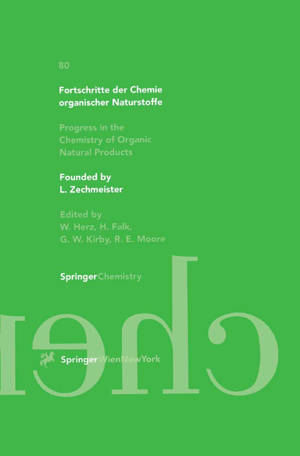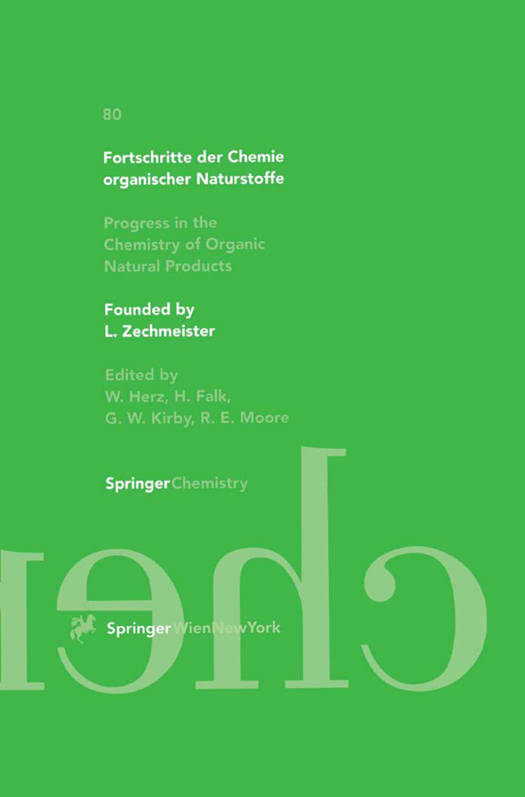
- Afhalen na 1 uur in een winkel met voorraad
- Gratis thuislevering in België vanaf € 30
- Ruim aanbod met 7 miljoen producten
- Afhalen na 1 uur in een winkel met voorraad
- Gratis thuislevering in België vanaf € 30
- Ruim aanbod met 7 miljoen producten
Zoeken
Fortschritte Der Chemie Organischer Naturstoffe / Progress in the Chemistry of Organic Natural Products
€ 153,95
+ 307 punten
Omschrijving
Glycosmis is a clearly defined genus within the tribe Clauseneae of the Aurantioideae subfamily of the family Rutaceae comprising about 40 species (1). Its range of distribution is centered in south and southeast Asia (India, Sri Lanka, Myanmar, Thailand, Malaysia, Indonesia) and extends to south China and Taiwan as well as to New Guinea and north Australia. Exceptions are only cultivated species like the Chinese G. parvijiora (Sims) Little, formerly called G. citrifolia (Willd. ) Lindley, which became naturalized in tropical America and Africa (Angola) (1). The shrubs or small trees are unarmed and possess pinnate or simple leaves with translucent punctate glands emitting an aromatic odor when crushed. The axillary inflorescences are usually dispersed closed panicles with small white flowers. The fruits are mostly pink, reddish or white berries of about I cm in diameter with only one or two seeds. The genus name Glycosmis originates from the sweet smell of the flowers and the sweet taste of the fleshy pericarp of the fruits. A good field and herbarium character of the genus is that the buds of new leaves are usually covered with short rusty-red hairs. In spite of the good delimitation of Glycosmis from the other closely related Clauseneae genera Clausena, Micromelum, Murraya, and Merrillia and the already existing subrevisionary treatment by Stone (1), there are still many unresolved taxonomic problems at the species level.
Specificaties
Betrokkenen
- Uitgeverij:
Inhoud
- Aantal bladzijden:
- 256
- Taal:
- Engels
- Reeks:
- Reeksnummer:
- nr. 80
Eigenschappen
- Productcode (EAN):
- 9783709172384
- Verschijningsdatum:
- 7/09/2012
- Uitvoering:
- Paperback
- Formaat:
- Trade paperback (VS)
- Afmetingen:
- 156 mm x 234 mm
- Gewicht:
- 381 g

Alleen bij Standaard Boekhandel
+ 307 punten op je klantenkaart van Standaard Boekhandel
Beoordelingen
We publiceren alleen reviews die voldoen aan de voorwaarden voor reviews. Bekijk onze voorwaarden voor reviews.







